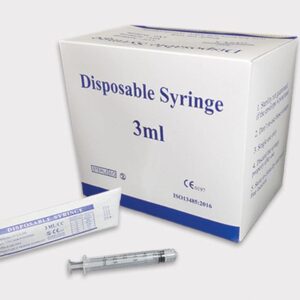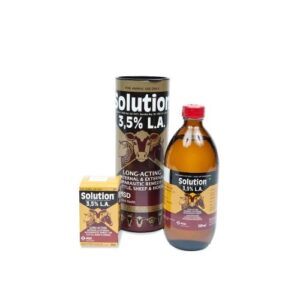Description
COMPOSITION
Moxidectin 20 mg/ml (2% m/v)
Praziquantel 125 mg/ml (12,5% m/v)
INDICATIONS
Broad spectrum dewormer for horses.
PHARMACOLOGICAL ACTION
Pegaquest® contains the active ingredients, moxidectin, a second generation macrocyclic lactone as well as praziquantel. Praziquantel is a broad spectrum cestocide and is an effective treatment against tapeworm in horses. The paste formulation is banana flavoured, palatable and effective against the most important roundworm species and bots in horses. It is used for the treatment and control of roundworms (including arterial larval stages of Strongylus vulgaris), bots, adult and late encysted small strongyles, tapeworms and Habronema spp.
Pegaquest® is effective against the following parasites:
Large strongyles: Strongylus edentatus (adults and immatures), Strongylus vulgaris (adults, immatures and arterial larval stages), Strongylus equinus
and Triodontophorus spp.
Small strongyles: including Cyathostomum spp., Cylicostephanus spp., Cylicocyclus spp., Cylicodontophorus spp., Gyalocephalus spp. and the encysted
stages of small strongyles
Ascarids: Parascaris equorum (adults and immatures)
Pinworms: Oxyuris equi (adults and immatures)
Hairworms: Trichostrongylus axei (adults)
Threadworms: Strongyloides westeri (adults)
Largemouthed stomach worms: Habronema spp. (gastric and cutaneous [summer sore] forms) and Draschia spp.
Lung worms: Dictyocaulus arnfieldi (adults and immatures)
Tapeworms: Paranoplocephala spp. and Anoplocephala spp.
Stomach bots: Immature Gasterophilus intestinalis and Gasterophilus nasalis
Cutaneous onchocerciasis: Onchocerca spp. (microfilaria)
WARNINGS
• Do not use on animals intended for human consumption.
• Do not administer the full syringe to horses weighing less than 400 kg.
• Extremely toxic to aquatic species. Do not contaminate dams, rivers, streams or other waterways with the product or used container.
• The concentration of Moxidectin in Pegaquest® may have adverse effects on dogs and cats.
• Keep out of reach of children, uninformed persons and animals.
• Although this product has been extensively tested under a large variety of conditions, failure thereof may ensue as a result of a wide range of reasons. If
this is suspected, seek veterinary advice and notify the registration holder.
PRECAUTIONS
• Accurately determine the mass of the horse to be treated and adjust the syringe to the correct dose for the horse.
• Poisonous to humans if swallowed.
• Wash hands after use.
• Will irritate eyes and skin.
DOSAGE AND DIRECTIONS FOR USE
Use only as directed. Accurately determine the mass of the horse to be treated. Turn the ring on the plunger to the correct dosage setting in accordance with the horse’s weight. When used as directed Pegaquest® is safe for use in foals over 4 weeks of age and in all breeding stock, including stallions and pregnant mares. The Pegaquest® syringe is graduated in intervals of 100 kg body mass. The contents of this syringe will treat a horse of 600 kg. Do not administer the full syringe to horses under 400 kg. Dosage: Pegaquest® is orally administered at a dose rate of 0,4 mg/kg moxidectin and 2,5 mg praziquantel per kg body mass.
ADMINISTRATION
• Ensure that the horse’s mouth is free of food before administration.
• The body mass of the horse should be determined accurately to facilitate correct dosing of the paste.
• Insert the syringe into the side of the horse’s mouth in the gap between the front and back teeth and deliver the paste onto the back of the tongue.
• Raise the horse’s head for a few seconds immediately after dosing to ensure that the full dose has been swallowed.
PARASITE CONTROL PROGRAMME
Regular treatment will reduce the risk of disease due to small and large strongyles such as colic and verminous arteritis. Reinfection of horses with worms is common. Treatment must be routinely repeated to ensure effective control. The long-term activity of Pegaquest® against worms, including encysted small strongyles, is very useful in reducing the required dosing frequency in strategic parasite control programmes. Retreatment intervals can be safely extended up to 13 weeks. Consult your veterinarian for advice on the appropriate programme to meet your specific needs.







Reviews
There are no reviews yet.